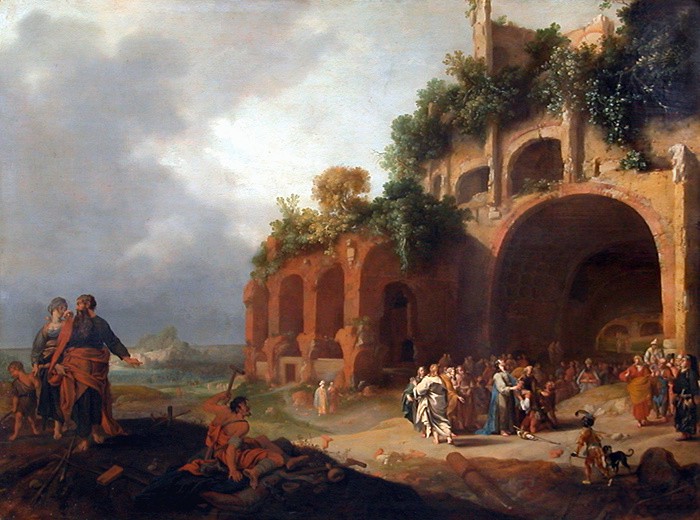This is a cantata for the 12th Sunday after Trinity, composed originally in 1723 and performed for the second time in 1727. Bach was to use it again with a few alterations, in the late 1740’s, for an occasion related to the Town Council.
The gospel for this Sunday (Mark 7: 31-37) tells the story of Jesus healing a man who was deaf and had a speech impediment. The libretto, by an anonymous poet, is written in the first person and it’s constructed as a song of praise, referencing the gospel story at several points: “thousand tongues” in #2; “singing” in #3; “my mouth is weak, my tongue dumb” and Jesus’ Aramaic word as he heals the man, “Hephata” (“be opened”) in #4; and “my mouth will sing with joy” in #5. For the opening movement, the text paraphrases the second verse of Psalm 103 (“Bless the Lord, my soul / and never forget any of his benefits.”), and this same concept led to choosing a hymn by Samuel Rodigast (1675) for the closing chorale.
The cantata is scored for extraordinary forces given that this was a regular Sunday – 3 trumpets, timpani, 3 oboes, bassoon, strings and 4-part choir. The first aria calls for recorder and oboe da caccia solos, and the second one, for oboe d’amore in addition to the strings.
The opening movement is a massive double fugue, illustrating the two concepts of the opening verses. After the instrumental opening, the voices get the first theme for “praise the Lord” (“lobe den Herrn”), an agile, melismatic series of sixteenth notes stated several times in quick succession by all the voices. A contrasting theme in quarters, for “and do not forget” (“und vergiß nicht”) comes in mid-way, introduced first by the tenors. The two themes are from that point on combined to produce the double fugue, and the movement closes with the da-capo restatement of the orchestral opening.
A very expressive secco recitative follows for the soprano, which leads to a tenor aria with recorder and oboe da caccia solos. It’s highly likely that these two instruments were played in performance by the two oboists of the ensemble. The aria features long melismas as word-painting illustrations of the word “erzähle” (“declare”).
The next movement is an alto recitative, which includes the reference to the healing by Jesus with a very interesting raise in pitch for the words “Preis und Ruhm” (“praise and glory”), as well as a transition into a lively arioso in representation of the thanksgiving, just after uttering the word “Hephatha” from the gospel.
The recitative leads to a bass aria with strings and solo oboe d’amore, which also includes very effective illustrations of the word “Leiden” (“suffering”) with some jarring long notes, and “Freuden” (“joy”) with lively sextuplets both on the voice and on the oboe.
The closing chorale is repurposed from Cantata 12 with minor modifications.
